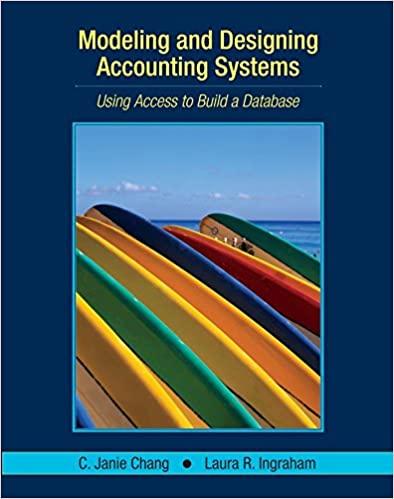Question
1. Management accounting is said to meet. Select one: A. The internal accounting needs of the organisation B. The external accounting needs of the organization
1. Management accounting is said to meet.
Select one:
A. The internal accounting needs of the organisation
B. The external accounting needs of the organization
C. The regulatory requirements of the organisation
D. The needs of laws that govern company financial reporting
2. Which of the following defines total product cost?
Select one:
A. Direct costs plus indirect costs of production, selling and administration
B. A prime cost plus production overhead
C. Indirect cost plus production overhead
D. Prime cost plus direct cost
3. Which of the following is always a relevant cost in the financial analysis of decision?
Select one:
A. Apportioned cost
B. Directly attributable fixed cost
C. Sunk cost
D. Committed cost
4. Portstewart Boat builders Ltd has been asked to refit a boat for a customer;
Skilled labour costing 8 per hour will be required for the refit. The workers will have to be taken off the production of canoes for resale for a total of 240 hours. The canoes are sold for 200 each and take 12 hours of skilled labour. The material cost of each canoe is 60.
What is the relevant cost of labour when assessing the viability of the refit contract?
Select one:
A. 1 920
B. 880
C. 4 000
D. 2 800
5. A total of all direct costs of production is also known as
Select one:
A. Production cost
B. Variable cost
C. Total cost
D. Prime cost
6. In most companies, direct labour is treated as;
Select one:
A. Product cost
B. Period cost
C. Fixed cost
D. Sunk cost
7. Direct labour costs for planning purposes will include
Select one:
A. All labour costs attributable to a product
B. Direct labour costs plus any bonuses
C.Total direct labour hours at the normal hourly rate of pay
D. Direct labour costs plus bonuses and overtime premiums
8. The classification of costs according to whether they change in the short run is known as analysis by:
Select one:
A. Type
B. Time
C. Behaviour
D. Function
9. Johore Ltd has the following costs. Direct materials 150 000, Direct labour 175 000 and Factory overheads of 225 000. It manufactured 10 000 Luton blinds of equal size and cost. What is the full product cost of a Luton blind?
Select one:
A. 32.50
B. 15
C. 55
D. 22.50
10. A strategy plan may best be described as
Select one:
A. A broad long term plan
B. A detailed long term plan
C. A detailed short term plan
D. A broad short term plan
11. Total production cost is found by which one of the following formulae?
Select one:
A. Opening inventory + Purchases Closing inventory
B. Direct Materials + Direct Labour + Direct Overheads
C. Indirect Materials + Indirect Labour + Indirect Overheads
D. Prime Cost + Production overhead
12. In process costing, wastage caused by unavoidable and expected causes is usually known as;
Select one:
A. Normal gain
B. Normal loss
C. abnormal gain
D. Abnormal loss
13. Raw materials which are incorporated into goods sold but are not easily identifiable to the goods being made would be known as:
Select one:
A. Direct materials
B. Work in progress
C. Direct overheads
D. Indirect overheads
14. The best way of allocating fixed overheads between products is:
Select one:
A. As a proportion of direct cost incurred by each product
B. There is no best way of allocating overheads
C. Based on the number of people involved in production of each product
D. Equally between different products
15. The wage costs which are incurred in converting materials into finished goods would be known as:
Select one:
A. Indirect labour
B. Direct labour
C. Salaries
D. Wages and salaries
16. Depreciation of machinery would be classed as:
Select one:
A. Direct expenses
B. Factory indirect expenses
C. Direct materials
D. Administration expenses
17. The term contribution refers to?
Select one:
A. The actual amount of profit made per unit
B. The difference between sales revenue and variable costs per unit
C. The budgeted profit per unit
D. The amount of profit which goes towards meeting the overheads of the business
18. The break-even point is that at which:
Select one:
A. The level of activity at which the business operates most economically
B. The fixed costs are the lowest
C. The level of activity at which the business neither makes a profit nor a loss
D. The variable cost per unit is minimised.
19. Which of the following statements regarding marginal costing is incorrect?
Select one:
A. It assumes that fixed costs remain fixed over relevant activity ranges
B. It is useful long-term planning technique
C. It assumes that costs can be classified as variable or fixed
D. It assumes that variable costs vary in proportion to activity
20. Given the following data:
| Fixed overheads | 40 000 |
| Selling price | 6 |
| Variable cost per unit | 4 |
If the selling price is increase by 50% then the break-even level would now be:
Select one:
A. 8,000 units
B. 10,000 units
C. 12,500 units
D. 20,000 units
Step by Step Solution
There are 3 Steps involved in it
Step: 1

Get Instant Access to Expert-Tailored Solutions
See step-by-step solutions with expert insights and AI powered tools for academic success
Step: 2

Step: 3

Ace Your Homework with AI
Get the answers you need in no time with our AI-driven, step-by-step assistance
Get Started


